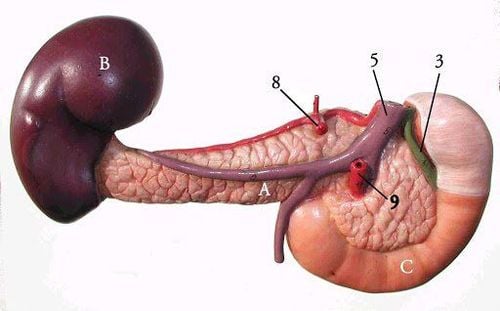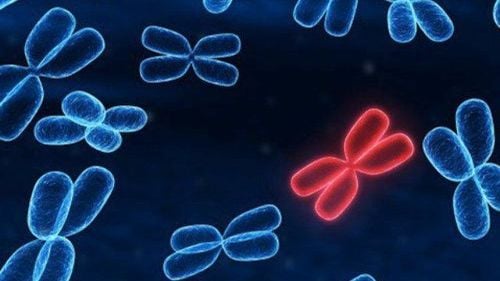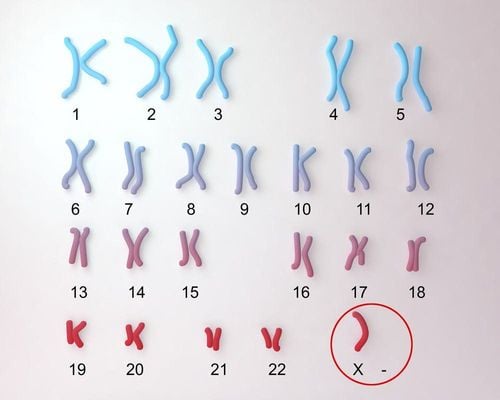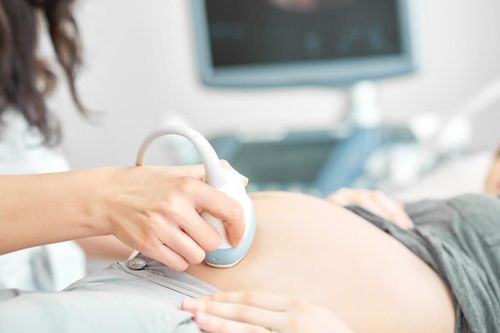This is an automatically translated article.
The article was professionally consulted by Doctor Department of Obstetrics and Gynecology, Vinmec Hai Phong International General Hospital.
Children with Down syndrome often reach developmental milestones a little later than their peers. If you already have one child with Down syndrome, the risk of your second baby also having Down syndrome is slightly increased.
1. What is Down syndrome?
Down syndrome is a chromosomal condition that occurs when an error in cell division results in an extra 1 chromosome 21.
About 1 in every 700 pregnancies has Down Syndrome. This number is determined by many factors, but research shows the risk is higher when the mother is older than 35.
Before age 30, less than 1 in 1000 pregnancies will have Down Syndrome. After the age of 40, the statistics increase to about 12 cases out of 1000 recorded.
2. Cause
2.1 Risk factors + Age of the pregnant woman
The risk of errors in chromosome division increases with the age of the egg, so the older a woman is, the higher her risk of Down Syndrome.

Couples who have had one child with Down syndrome have a slightly increased risk of their second child also having Down syndrome (about 1%). There is an increased risk depending on the type of mutation. Therefore, prenatal screening and genetic counseling are very important. People with Down syndrome are rarely fertile. 15% - 30% of women with extra trisomy 21 are fertile and about 50% risk of having a baby with Down syndrome.
One of the three genetic variants below can cause Down syndrome:
Trisomy 21 (trisomy 21): In about 95 percent of cases, Down syndrome is caused in all cells again has three copies of chromosome 21, instead of the usual two. This is due to abnormal cell division during the development of a sperm or egg cell. Mosaic Down Syndrome. In this rare form of Down syndrome, the person will have a few cells with extra copies of chromosome 21. Mosaicism on normal and abnormal cells occurs because abnormal cell division occurs. after fertilization. Translocation Down syndrome: Down syndrome can occur when a segment of chromosome 21 attaches to another chromosome (translocation) before or after fertilization. A baby is born with two normal copies of chromosome 21, but he also has extra genetic material from chromosome 21 attached to another chromosome. There are no known behavioral or environmental factors that will cause Down syndrome.
2.2 So is Down syndrome hereditary? In most cases, Down syndrome is not inherited because it is caused by faulty cell division during early fetal development. Even so, only about 3-4% of babies with Down syndrome have translocation and only a few of them receive it from their parents.
When a balanced translocation is inherited, one parent has some 21 year old chromosome rearrangements on the other chromosome, but no genetic material is added.
That means the parent will not have signs and symptoms of Down syndrome but could pass an unbalanced translocation to their children, causing Down syndrome in the child. Can a genetic counselor help parents assess the risk of a second child having Down syndrome?
3. Symptoms
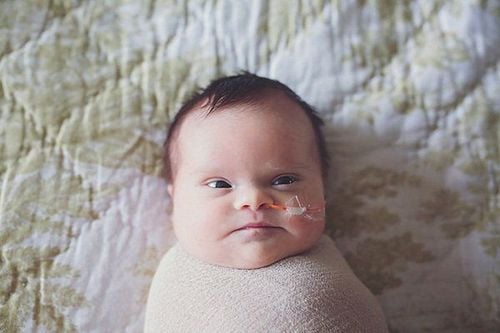
Some of the morphological and functional signs of patients with Down syndrome include:
Slanted eyes, raised eyelids, sometimes strabismus, skin folds covering the eyelids, slightly swollen and red eyes. The inside of the black has many small white dots like sand grains and usually disappear after 12 months of age. Low muscle tone Small stature and short neck Flat nose bridge Simple deep fold on center of palms Mouth protruded and always open, palate high, thick tongue sticking out Short limbs, short, large hands. The fingers are short, the little finger is often clubbed. The palm of the hand has deep folds lying on the side. Flat feet, crow's toes, outstretched big toes; the gap between the big toe and the second toe is too wide Loose elbows, hips, knees, ankles Small heads Undeveloped genitals, infertility Growth retardation People with Down syndrome often have a developmental history Cognitive development showing mild to moderate intellectual disability. However, cognitive development and intellectual ability are very different.
Children with Down syndrome often reach developmental milestones a little later than their peers.
4. Diagnostic method
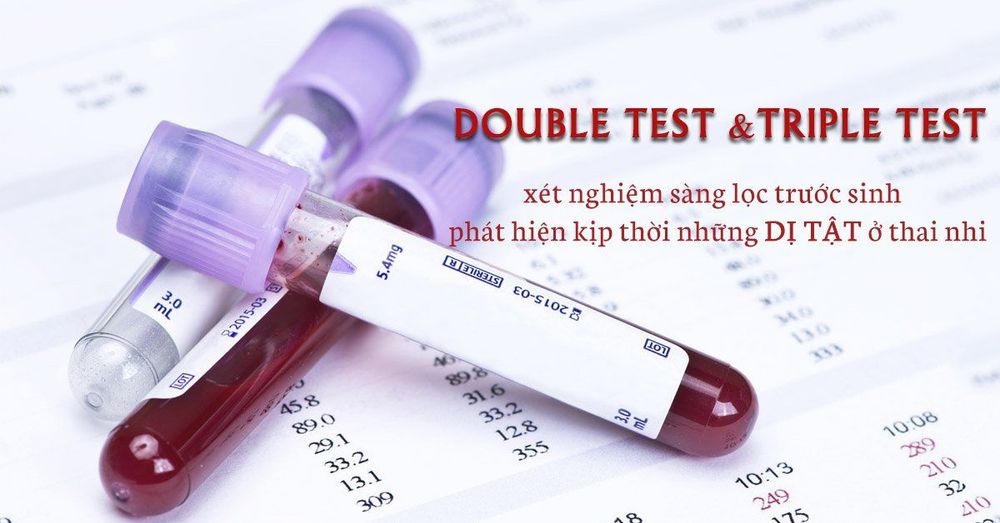
Screening and diagnostic tests for Down syndrome are recommended for all pregnant women of all ages.
Screening tests can indicate the possibility or risk that a mother is carrying a child with Down syndrome. But these tests don't accurately tell or diagnose whether a child actually has Down syndrome. Diagnostic testing can identify and diagnose Down syndrome in a child. Your doctor can analyze the types of tests needed, their pros and cons, their benefits and risks, and interpret the test results to you. If necessary you may be advised to see a geneticist. The combined screening test was performed in two steps in the first and second trimesters, respectively. The results will be aggregated to predict the baby's risk of Down syndrome. First trimester of pregnancy (Double test): Part one includes a blood test to measure PAPP-A and an ultrasound to measure nuchal translucency. Triple test: A test of four pregnancy-related blood factors including alpha fetoprotein, estriol, HCG and inhibin A. Non-Invasive Prenatal Test (NIPT): As the most advanced prenatal testing method in the world, analyzing the free fetal DNA dissolved in the mother's blood by Gene sequencing technology. Since then, detecting chromosomal abnormalities at a very early time with an accuracy of up to 99.6%. Because maternal blood is taken without amniocentesis, NIPT is absolutely safe for mother and fetus. With the outstanding advantage of being non-invasive, completely harmless to the fetus and can be performed as early as the 8th week, NIPT is recommended to be indicated for high-risk subjects and performed regularly. at Vinmec. Diagnostic testing during pregnancy: If your screening test results are positive or worrisome, or you are at high risk of having a baby with Down syndrome, you may consider further testing to confirm the diagnosis. guess. Your doctor will help you weigh the pros and cons of these tests. Diagnostic tests that can confirm Down syndrome include: Chorionic villus Biopsy (CVS): In this test, cells are taken from the placenta and used to analyze the fetal chromosomes. This test is done in the first trimester of pregnancy, between the 10th and 13th weeks of pregnancy. The risk of miscarriage due to CVS is very low. Amniocentesis: A sample of the amniotic fluid around the fetus is removed through a fine needle inserted into the mother's uterus. This sample will be used for fetal chromosomal analysis. Doctors usually perform this test in the second trimester of pregnancy, after 15 weeks of pregnancy. This test also has a low risk of causing a miscarriage. Preimplantation genetic diagnosis is an option for couples prior to IVF for those who are at high risk of passing on certain genetic conditions. The embryos will be tested for genetic abnormalities before being implanted in the uterus. Diagnosis of the Newborn After birth, the initial diagnosis of Down syndrome is usually based on the baby's morphology. But features associated with Down syndrome are found in children who don't have the disease, so the doctor will recommend a test called a chromosomal karyotype to confirm the diagnosis. Using a blood sample, this test analyzes your baby's chromosomes. If there is an extra chromosome 21 in all or some of the cells, the baby has Down syndrome.
For more information, please contact the hospitals and clinics of Vinmec Health system nationwide
Please dial HOTLINE for more information or register for an appointment HERE. Download MyVinmec app to make appointments faster and to manage your bookings easily.




